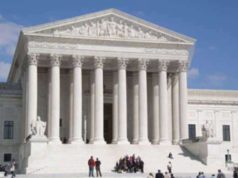
The Judiciary Act of 1789 is an important piece of legislation that set up the United States federal court system and established the power of judicial review, which plays a pivotal role in American government to this day.
The act was signed into law by President George Washington on September 24th, 1789, and laid out the framework for the federal judiciary, including the Supreme Court, district courts, and circuit courts.
One of the most significant aspects of the Judiciary Act of 1789 was its creation of the office of Attorney General, who would serve as the chief legal adviser to the President and head of the Department of Justice. This position continues to be an integral part of the federal government, with the current Attorney General serving in the Cabinet of President Joe Biden.
The Judiciary Act of 1789 also established the principle of judicial review, which allows federal courts to declare acts of Congress unconstitutional. This power was famously used by the Supreme Court in its landmark decision in Marbury v. Madison in 1803, in which Chief Justice John Marshall declared that the Court had the authority to strike down laws that conflicted with the Constitution.
In addition to setting up the federal court system and establishing judicial review, the Judiciary Act of 1789 also prescribed the rules and procedures for federal courts, including rules of evidence and jury selection. These guidelines helped to create a consistent and fair system for justice that continues to serve the country to this day.
Overall, the Judiciary Act of 1789 was a vital piece of legislation that helped to define the role of the federal judiciary in shaping American law and government. Its creation of the office of Attorney General, establishment of the principle of judicial review, and establishment of rules and procedures for federal courts have had a lasting impact on American society and continue to shape the legal landscape of the nation.
Though Article 3 of the Constitution made headway about establishing the judicial branch of the Government, it was still vague on how much power the Supreme Court would have over Congress. One aspect that the Judiciary Act of 1789 covered was the creation of levels of courts. The Act also established circuit courts and district courts.
With regard to district courts, the Judiciary Act of 1789 states that all of the 13 districts (the colonies were divided into 13 districts) shall have one district court and one district judge appointed. In each section there are to be two courts and the powers of those courts are to be the Supreme Court and the district judge of that region. To preside over these courts, a Federal judge is appointed by the President in accordance with Article 3 of the Constitution.
Another aspect of the Judiciary Act of 1789 is that Congress allowed people to represent themselves in court or appoint someone to represent them. This is in contrast to before the Act where people could not represent themselves in a court of law. The Judiciary Act of 1789 also established the office of the Attorney General. The job of the Attorney General is to oversee legal affairs. At the time this Act was enforced, the main role of the Attorney General was to provide legal advice to the President. Finally, the Act also establishes that if one of the parties is to expire before the end of the trial, the trial may continue.























